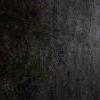-
Posts
388 -
Joined
-
Last visited
Reputation Activity
-
 M Carter got a reaction from Mat Mayer in 2013 MacBook Pro - OSX 10.8.5 - Premiere Pro 8.2.0 - Software Update Before I Continue Editing?
M Carter got a reaction from Mat Mayer in 2013 MacBook Pro - OSX 10.8.5 - Premiere Pro 8.2.0 - Software Update Before I Continue Editing?
If at all possible when you upgrade to a major OS version, stick it on a partition or a separate boot drive (clone your current boot drive and then boot from the clone and install the new OS and you'll see how everything will work through the upgrade process to actual real-world work). Test everything you can think of on the new one. if something's not ready for prime time, you can get straight back to work on your old drive. When you finally decide it's cool to switch over, keep the old version handy for a few more weeks just in case.
I assume most people working with this level of software are only using their boot drives for system, apps, and maybe email and invoicing. Maybe music and personal photos as well. That's really the way to go (and you should be backing up your boot drive as well as your raids and work drives). Keeping your boot free of work and renders and scratch files makes testing a new OS a lot easier.
-
 M Carter got a reaction from User in Transcoding AVCHD to ProRes?
M Carter got a reaction from User in Transcoding AVCHD to ProRes?
These kinds of questions are dependent on many factors. It would be easy to do some tests and find out. Get the same clip in prores, AVCHD, etc, play with it, stack some effects, and you'll know how it "feels" - and also time your final renders and so on for harder data.
-
 M Carter got a reaction from Pavel Mašek in Petition for Samsung NX1 hack
M Carter got a reaction from Pavel Mašek in Petition for Samsung NX1 hack
The big issue would be the card melting into a sticky liquid inside the camera and...
Kidding aside, I was at a bar one night and a client returned a SanDisk Extreme SD card (20mbs) I'd forgotten about. Stuck it in my jeans pocket (in the little plastic case - which isn't watertight or dustproof). Then we had drink after drink.
Anyway, a few days later, I noticed an SD card sitting in the laundry room. My wife said, "Oh, that thing was in your pocket". It had gone through wash, rinse, and spin, and then into the dryer for an hour. On "cotton" or whatever.
I took it to my desk, out of curiosity I wanted to test it before I threw it out. But… I got busy, and it got mixed into my other cards.
I still shoot with it to this day, a year or more later (not fast enough for my current 4K, but it goes in the big Panasonic and my Nikons). I have no idea which card it is. Works fine though.
-
 M Carter got a reaction from SMGJohn in Petition for Samsung NX1 hack
M Carter got a reaction from SMGJohn in Petition for Samsung NX1 hack
The big issue would be the card melting into a sticky liquid inside the camera and...
Kidding aside, I was at a bar one night and a client returned a SanDisk Extreme SD card (20mbs) I'd forgotten about. Stuck it in my jeans pocket (in the little plastic case - which isn't watertight or dustproof). Then we had drink after drink.
Anyway, a few days later, I noticed an SD card sitting in the laundry room. My wife said, "Oh, that thing was in your pocket". It had gone through wash, rinse, and spin, and then into the dryer for an hour. On "cotton" or whatever.
I took it to my desk, out of curiosity I wanted to test it before I threw it out. But… I got busy, and it got mixed into my other cards.
I still shoot with it to this day, a year or more later (not fast enough for my current 4K, but it goes in the big Panasonic and my Nikons). I have no idea which card it is. Works fine though.
-
 M Carter got a reaction from sandro in Petition for Samsung NX1 hack
M Carter got a reaction from sandro in Petition for Samsung NX1 hack
The big issue would be the card melting into a sticky liquid inside the camera and...
Kidding aside, I was at a bar one night and a client returned a SanDisk Extreme SD card (20mbs) I'd forgotten about. Stuck it in my jeans pocket (in the little plastic case - which isn't watertight or dustproof). Then we had drink after drink.
Anyway, a few days later, I noticed an SD card sitting in the laundry room. My wife said, "Oh, that thing was in your pocket". It had gone through wash, rinse, and spin, and then into the dryer for an hour. On "cotton" or whatever.
I took it to my desk, out of curiosity I wanted to test it before I threw it out. But… I got busy, and it got mixed into my other cards.
I still shoot with it to this day, a year or more later (not fast enough for my current 4K, but it goes in the big Panasonic and my Nikons). I have no idea which card it is. Works fine though.
-
 M Carter got a reaction from User in Transcoding AVCHD to ProRes?
M Carter got a reaction from User in Transcoding AVCHD to ProRes?
Some NLEs will let you edit right from AVCHD (but they're basically rendering it in the background as I understand it).
Opinions are various and often heated, but I'm a prores shop and transcode from the start. Makes it easier to share footage, and more seamless to jump from after effects, etc. I also very much prefer to trim files in MPEG Streamclip for effects or motion graphics vs. trimming in AE, and I tend to do that daily. So again, Prores is much more universal on a mac. And if your system doesn't have a lot of oomph, editing native will slow you down, where ProRes will crank through like melting butter on toast.
I shoot AVCHD, H264 and H265 (NX1). I really dislike AVCHD since I can't go to the folder, see the clip I want, and grab it, insert it, trim it, effect it, whatever. it's a good format for shooting but I don't like it for post.
Don't know about FilmConvert, but you can edit ProRes 1080 on a pre-2000 mac all day, full screen, full rez, no slowdowns unless you add a lot of filters or stack a bunch of titles and graphics. it's designed to run like a champ on a decent Mac. And you can recompress ProRes all day with no artifacts or visible loss.
EditReady does a killer job with AVCHD, just drag the folder in, set your output folder, and make some coffee or whatever. You can also resize and conform frame rates at the same time. (FCP 6 and 7 also do a good job transcoding HVAC with their log and transfer windows). EditReady is well worth the fifty bucks and it will handle about anything you can throw at it, it's a robust piece of pro software, not like Rocky Mountains at all. A real workhorse. My workflow is "get back from the shoot, copy the raw card, transcode with Editready while I unpack or do invoicing or snort coke off a hooker's.." well, you get the idea. I don't return the cards to the cameras until the next day, after my backup has run, so I have the raw card and the ProRes on my system and my backup drives. Just my .02 but it's a very robust and versatile workflow.
-
 M Carter got a reaction from IronFilm in Kinda fun - 2D stock images to 3D
M Carter got a reaction from IronFilm in Kinda fun - 2D stock images to 3D
I had to come up with about 50 of these for a project where they had the unlimited stock photo account but a very low budget. It got to be kind of fun, other than the deadline had me up til 2 and 3 AM.
This kind of stuff can add to your billable hours - since most of us have decent computers, after effects and photoshop and AI, if you can learn character animation, animating charts and data, or basic animation of things like manufacturing processes… you can really add to your billing (more for one-man-band guys than studios with dedicated animators anyway), farm less stuff out, and have more tools for telling business stories for marketing videos.
-
 M Carter got a reaction from HelsinkiZim in Does anyone here use Fly/Glidecams anymore?
M Carter got a reaction from HelsinkiZim in Does anyone here use Fly/Glidecams anymore?
I've got a Came carbon-fiber, pretty simple model, no battery rig at the bottom. As far as operating, yeah, you need tons of practice, but I've gotten very useful shots, corporate gigs, b-roll stuff. I can't imagine it being any better for what it is, very well constructed and smooth, quality piece of gear.
I've balanced it pretty quickly to different cameras, lately I find the NX1 with the tiny 16-50 kit lens to be excellent on it with the optical OIS turned on, sometimes even use the AF. I use the manfrotto release plates everywhere, I had to mount one to a little plywood block so the release knob would clear the release lock on the Came, but I can switch from sticks or shoulder to steadicam in a flash and give the balance a quick tweak. I skip the matte box and use screw-in ND on the kit lens, I just got a 52mm step ring and a rubber hood for it. 52mm filters are all over the place, whatever flavor you want can be found pretty cheap. Generally for steadicam you shoot wide and stopped down so I haven't had a reason to stick any big glass on the thing and the Samsung kit's an impressive little lens.
I haven't looked seriously at gimbals due to the expense and hassle factors, but they are coming down in price and the usability bugs seem to be getting ironed out.
Gimbals are, to some extent, like drones. Drones are just killer to cheaply get very high-dollar shots, like huge crane moves and helicopter stuff. But most drone ops are like "look at all the stuff this can do" and suddenly a classic cinematic move starts screaming "look!!! I'm a drone!!" Gimbals aren't quite as bad in that regard, if someone executes a well planned shot - the clip that sold so many on gimbals was the roller blader with the taxi cab shot, a good example of shot design that's exciting but not something that would pull the viewer out of the scene. To me the gimbals seem like the kind of thing where I'd rather just hire an op that knows it well and cans et it up quickly. My brain is too full...
-
 M Carter got a reaction from Inazuma in Kinda fun - 2D stock images to 3D
M Carter got a reaction from Inazuma in Kinda fun - 2D stock images to 3D
I had to come up with about 50 of these for a project where they had the unlimited stock photo account but a very low budget. It got to be kind of fun, other than the deadline had me up til 2 and 3 AM.
This kind of stuff can add to your billable hours - since most of us have decent computers, after effects and photoshop and AI, if you can learn character animation, animating charts and data, or basic animation of things like manufacturing processes… you can really add to your billing (more for one-man-band guys than studios with dedicated animators anyway), farm less stuff out, and have more tools for telling business stories for marketing videos.
-
 M Carter got a reaction from MattH in Commercial Movie Success
M Carter got a reaction from MattH in Commercial Movie Success
The OP seems to be musing about some magic formula. Film execs have been thinking the same thing since the 20's. The answer is, "there isn't one". Good stories, powerfully told and technically well-crafted often die. Meanwhile, there's a huge audience for (what I feel anyway) is pure crap. (I have no clue why every movie now has a "marvel" logo and adults go to see superhero films by the millions. I love me some "escapist" entertainment, but I got my limits!!!)
One big differentiator is a hook or gimmick - Blair Witch for instance - some hated it but I found it a decent flick and very, very "new" at the time. That "Tangerine" flick, filmed on the iPhone - that got people curious, and many reviewers felt it was a very good film (and that the iPhone's particular color rendering actually worked and wasn't just a gimmick). Having something that gets your film talked about can help. But "new" or unique is very hard in this era.
A lot of it is likely pure luck, or the luck of catching the eye of someone with connections or a "voice" that gets heard in the media or whatever - someone that champions the work and starts things snowballing.
The key - if you want to do this for a living - is make compelling content in a way that you won't lose a lot (or any) money. So you can go on to the next one vs. bankruptcy. Many people are succeeding at that as well.
-
 M Carter got a reaction from sudopera in Need some advice on Mamiya(or other) MF lenses on Nikon mount
M Carter got a reaction from sudopera in Need some advice on Mamiya(or other) MF lenses on Nikon mount
I don't think you'd get an "MF Look" though. People talked about an MF look for The Revenant, but that was shot with a huge sensor and they needed MF lenses to cover it and used hassy lenses that were designed for a 6x6cm image. Then there's the 645 format, which is closer to FF 35 but still pretty big. I don't know that you'd see much difference other than any specific character that comes from the lens (or from only the center of the lens without a speedbooster). When you get into "character" you may have to go farther afield than MF glass that was designed to be really precise. I've been shooting video with 1960's era Canon FL lenses on the NX1 and it really does have a gorgeous look, probably good for music video or fashion stuff, kind of like it has the perfect amount of diffusion yet is still very sharp - and the color is really gorgeous and a little muted. But hey, I'm tearing up a zoom to paint all the insides silver and make a really flare-heavy lens, so to each their own. But the FLs and wildly jacked-with lenses are going for specific character rather than optical perfection. I shot color and B&W on Mamiya 6x7 for years and I can't say there was anything specific about it other than amazing quality when you mix great glass with really big media. I still have my 4x5" view camera, same deal. Though i could stick an old petzval lens on that thing and get some wild stuff certainly (but a large format petzval may not be as badass on a sensor 1/100th the size or whatever the math is). Anyway, post some tests as you progress with this, we're all geeks here!
-
 M Carter got a reaction from DayRaven in Blackmagic Micro Cinema Camera
M Carter got a reaction from DayRaven in Blackmagic Micro Cinema Camera
I don't get the fascination with "cages" - it adds hundreds every time you get a new body. I've been using the same rails & baseplate setup for a couple years now. Though I don't stick a microphone on my camera, I kinda like it next to the talent (for true event and run & gun shooting without a boom op, I use a "real video camera" with mics and XLRs and NDs). I once stuck a battery-powered cheap lav inside the front of one of my rails for synch when i couldn't get a recorder-out working with a motion shot and it sounded about as good as any other mic stuck to the camera, and was invisible - I'll probably make that permanent for when I'm moving too much. I have a little 15mm rail clamp with a lock for two cables, that gets 8" HDMI and camera-in-extensions with female ends, so I'm not fiddling with the camera ports to hook up. Haven't spent a dime on camera rigging in a couple years now.
-
 M Carter got a reaction from cisco150 in Petition for Samsung NX1 hack
M Carter got a reaction from cisco150 in Petition for Samsung NX1 hack
+1 - by the way, Samsung's support of hacking was that they released an SDK for camera control - nothing deeper than that. So someone could potentially develop more remote control apps or keep them coming when Samsung abandons theirs.
I wonder - rumor mill was that Samsung NX engineers have been transferred to various divisions. Would be cool if someone had an in with Samsung (journalist or filmmaker, I dunno) and a funded project could actually fine a software engineer who worked on the NX firmware, and hire them as an engineer or advisor. Seems like that would be a more direct path to a useful product. It's a giant company though, but hey, place an ad in a Korean trade publication??
Other than that, see if anyone at ML has dug into the camera - someone experienced may have some insights into the structure of the code and how difficult it could be.
-
 M Carter got a reaction from iamoui in EditReady now supports the Samsung NX1 / H.265
M Carter got a reaction from iamoui in EditReady now supports the Samsung NX1 / H.265
Looks good to me, but it's very slow. My workflow has been editready full rez to proress 422. From there I can do trims in streamclip and output 4k trims to Prores (for shots that will get reframed, tracked, stabilized, whatever) and 1080 for general editing. Prores in excellent for doing this sort of thing, there's just no visible generation loss that I have ever seen. Plus, the H265 files are so small, I keep them around, in case I want to run one out some other way.
-
 M Carter got a reaction from iamoui in Price was $1000 yesterday now back to $1500
M Carter got a reaction from iamoui in Price was $1000 yesterday now back to $1500
I agree. Sounds like the new Sony may be an equivalent body, but I don't see anyone catching up in the $1k market any time soon. And even when they do, the NX will still have every feature it had when you bought it. Ridiculously capable camera. Wish there were less RS, but I'm learning to deal with that, just really watch yourself when handheld and get out the steadicam more (and hell, I shot some gigs with a D7000 years ago - great camera for jello commercials). (Though the color was lovely.) BTW, the NX1 with the 16-50 kit zoom? Amazing budget steadicam setup - OIS and useable AF - and who shoots Steadicam at 2.8 anyway? At 3.5 or 4, that lens is really attractive. Not as gorgeous as a classic, vintage wide prime - but you could stick 5 of the kit zooms on your rig and still be lighter than some classic 18-20mm glass. Get a 55mm step-up ring and get some cheap ND and maybe a diffusion filter (ever see how cheap quality 52mm filters are??) I just leave the step-up on mine and use a 52mm cap. get a rubber collapsible hood for when you need it. Really really dig it.
-
 M Carter got a reaction from kidzrevil in Lenses
M Carter got a reaction from kidzrevil in Lenses
Canon FL 100mm 3.5 - 1960's era. LONG focus throw. This example looks like it had some fungus cleaned from an internal element, it's a little "scarred" looking when you shine a penlight down the barrel. Little metal tank, 48mm filter thread. $15. Love the colors, detail, and softness-where-you-want it. All from 4K grabs, shot wide open. Minor grade in Photoshop (just upped the blacks a bit) and a touch of sharpening, about what I'd normally do for non-people shots.
In particular, there's some really lovely stuff going on with greens and blues. I've played with the FL 35mm 2.5 ($20), 50mm 1.8 ($20) and 19mm 3.5 R ($200, a real legend of a lens, almost zero distortion and hard to find) and they all render similarly. Looking for an 85 next, but that's a highly regarded lens to find this cheap.
I could really see doing something narrative-short, fashion-beauty or music video with these. You could build a full set of primes, including the $15 adapters, for a couple hundred bucks (minus the 19mm which usually goes for $350 and up). Lens range also includes a 28mm, 58mm, some of the normal glass in 1.4 and 1/2 variants I believe, a 135mm 2.5(?) and a 200mm f3.5 or f4.
-
 M Carter got a reaction from TheRenaissanceMan in Lenses
M Carter got a reaction from TheRenaissanceMan in Lenses
Canon FL 100mm 3.5 - 1960's era. LONG focus throw. This example looks like it had some fungus cleaned from an internal element, it's a little "scarred" looking when you shine a penlight down the barrel. Little metal tank, 48mm filter thread. $15. Love the colors, detail, and softness-where-you-want it. All from 4K grabs, shot wide open. Minor grade in Photoshop (just upped the blacks a bit) and a touch of sharpening, about what I'd normally do for non-people shots.
In particular, there's some really lovely stuff going on with greens and blues. I've played with the FL 35mm 2.5 ($20), 50mm 1.8 ($20) and 19mm 3.5 R ($200, a real legend of a lens, almost zero distortion and hard to find) and they all render similarly. Looking for an 85 next, but that's a highly regarded lens to find this cheap.
I could really see doing something narrative-short, fashion-beauty or music video with these. You could build a full set of primes, including the $15 adapters, for a couple hundred bucks (minus the 19mm which usually goes for $350 and up). Lens range also includes a 28mm, 58mm, some of the normal glass in 1.4 and 1/2 variants I believe, a 135mm 2.5(?) and a 200mm f3.5 or f4.
-
 M Carter got a reaction from Axel in Hiding Noise in FCPX
M Carter got a reaction from Axel in Hiding Noise in FCPX
Neat video is a great solution and the value for the money is impressive. Want some tips?
Any shoot that you fear dealing with noise - high ISOs or deep shadows - shoot a second or so of a flat surface, not overly dark or bright (no channels clipped. so avoid intense colors), the more it fills the frame the better. Defocus the lens so you're just shooting noise, and shoot it at the same ISO and WB as the shot. Slate your noise clips if necessary (but generally, if you have three takes followed by a clip that's a tiny file size, you'll know it's your noise clip). Or make a point of sticking a card in at the head or tail of a shot so your noise profile card is part of the clip. Use the noise clip to make the auto noise filtering profile and apply that. And try to save your profiles intelligently (IE, make a folder with camera name, and name the clips with ISO and WB, like --folder: NX1--> filne name: daylight-1600iso). I don't know how important WB is for fine-tuning noise, but since WB is adding gain to specific channels, it's probably key for accurate noise removal. And if you use custom WB you won't have an existing profile.
ALL OF THE ABOVE takes seconds (many shots have a good enough flat space, but NV likes a pretty good sized chunk, I think 128px square is the max??), and you can end up with a nice library for shots when you don't have a good solid to tune the noise filtering. NEAT VIDEO IS BETTER WHEN IT'S NOT GUESSING - give it a solid noise profile for the specific shot.
Try to render neat video only once; on some NLE timelines, you'll force a re-render if you tweak any setting like color or contrast or opacity. So do your edit, and then render out prores (or whatever) of your clips in the edit (add heads & tails for transitions if needed) with NV and re-import; color correct on top of those.
I just use neat video in After Effects; I'll ID the clips that need it, setup a project, create the noise profiles (some projects you might need only need one or two), add the effect, and hit "render" before I go to bed, leave for a meeting, whatever. Then you're done with it and your NLE will work with native - and noiseless - files.
-
 M Carter got a reaction from exomonkeyman in Thoughts on a lightweight run & gun DSLR RIGS
M Carter got a reaction from exomonkeyman in Thoughts on a lightweight run & gun DSLR RIGS
The do-everything rig is usually kind of overkill, especially sticking a mic on top of everything else.
I opted for a really solid rails & baseplate setup (fore and aft legs between the tripod and camera plates) with a Manfrotto style release (since their release plate is widely available, it's on all my stuff from the rig to the tip of my crane). I have a rail clamp that holds the HDMI cable and camera-in (1/8), just 6" female-ended cables; that way I have a full-size HDMI out. With the NX1, I don't use the loupe, the EVF is fantastic on that thing. Sometimes have a follow focus, sometimes not. Handheld I keep the FF knob near a front handle when possible.
With my Nikon, I have the Kamerar loupe which uses the Manrotto baseplate (so that's the camera baseplate) and the loupe pops on and off. I use front handles and shoulder mount that go on the rails, the fronts are wide enough that the whole thing can go on an off the tripod in seconds. I can attach the audio recorder (DR 60D) to the setup when there's no shoulder mount; I don't ever stick a mic on the camera - if I need audio for handheld, the DR goes in a waist pack for the boom op and I get a camera out cable if we can stay close. If not, the internal mic is good for synch. I have a manfrotto mount on my steadicam, so the cables come out of the jacks, the camera comes off the rails, and onto the steadicam. I keep it balanced for my wide zoom. Both the Nikon and the NX1 have audio I can use for editing if they're fed a preamped line source from the DR and if I get all the gain setup properly. The DR has a good limiter and also records a minus-6 track, and for some edits I'll need to either pop in a bit of the minus-6 for spikes, or just use the audio from the DR.
I'll stick a monitor on the hot shoe if I'm on sticks. It's all pretty fast to go from handheld to sticks to steadicam, just seconds. But I don't mess around with on-camera mics and can't think of a gig where they wouldn't understand a couple hundred bucks for a boom op (I just trained a musician/friend who has good ears and a good brain to boom, he likes the extra cash). If you're recording audio, it might as well be something you can use in the edit. For synch audio, if you want to skip the camera mic, get a cheap little lav mic with an in-the-case battery, and chop the cable down to a foot or so, tape it to the front of one rail... or something.
There's plenty of times I can have a recorder mounted to a boom stand with a mafer or something, and have a mic ready to place and aim to grab quick interviews.
-
 M Carter got a reaction from mercer in Lenses
M Carter got a reaction from mercer in Lenses
That's pretty cool - does it release quickly? I swap lenses a lot during some shoots.
It's not a twisting issue - still lens mounts don't seem to be designed for rock-solid connection, and adding an adapter gives you more points where motion can occur. What I've found is that the first twist of the FF will make the lens bump upwards (or down depending on focus direction). Using an adjustable lens support, if I'm going to do a focus move, I'll add a bit of tension, lifting the lens maybe a millimeter or less, but that takes up the range the lens would move and I get a good pull. I usually add a whip if I'm seeing any motion, the whip removes any vibration from your hand on the knob. This strategy (taking the upward play from the lens and mounts and adapters as a group) could be worrisome if overdone - you're adding some upward pressure to those points. In practice, I've found you're just taking out any available up-down play - just don't crank it up so far that it could warp something! And I usually dial it back off for static focus shots.
By the way, get the Fotga DP focus is you're on a budget - really well made FF for the $$, very solid, with 2-point focus stops, main gear can flip to either side in seconds, and spares kits are on amazon (main gear, gear attach screw, and stop screws) for like ten bucks - handy to have just in case.
-
 M Carter got a reaction from TheRenaissanceMan in Lenses
M Carter got a reaction from TheRenaissanceMan in Lenses
That's pretty cool - does it release quickly? I swap lenses a lot during some shoots.
It's not a twisting issue - still lens mounts don't seem to be designed for rock-solid connection, and adding an adapter gives you more points where motion can occur. What I've found is that the first twist of the FF will make the lens bump upwards (or down depending on focus direction). Using an adjustable lens support, if I'm going to do a focus move, I'll add a bit of tension, lifting the lens maybe a millimeter or less, but that takes up the range the lens would move and I get a good pull. I usually add a whip if I'm seeing any motion, the whip removes any vibration from your hand on the knob. This strategy (taking the upward play from the lens and mounts and adapters as a group) could be worrisome if overdone - you're adding some upward pressure to those points. In practice, I've found you're just taking out any available up-down play - just don't crank it up so far that it could warp something! And I usually dial it back off for static focus shots.
By the way, get the Fotga DP focus is you're on a budget - really well made FF for the $$, very solid, with 2-point focus stops, main gear can flip to either side in seconds, and spares kits are on amazon (main gear, gear attach screw, and stop screws) for like ten bucks - handy to have just in case.
-
 M Carter got a reaction from DPStewart in Petition for Samsung NX1 hack
M Carter got a reaction from DPStewart in Petition for Samsung NX1 hack
I assume the real big one is increasing the bit rate; from there, possibly investigating internal sharpening or noise reduction? Seeing what's in the processor pipeline and getting more control over it? Where does the shadow blocking come from, things like that? Maybe the first hack isn't even a hack, but a pipeline view of what's going on, to see what's actually possible.
Somewhere out there is the guy who wrote the damn firmware. Wish we knew someone at Samsung… there's the fastest track to this, is anyone from the team still there and could they get the OK to do this on a freelance/spare time basis?
-
 M Carter got a reaction from kidzrevil in Lenses
M Carter got a reaction from kidzrevil in Lenses
I use some pretty huge glass on the NX1 - Nikkor 28-70 (which people called "the beast" when it came out, but freaking amazing lens), 80-200 2.8, Canon FL 19mm… rails and a lens support are pretty mandatory. Especially if you use a follow focus, still lens mounts aren't made for smooth focus pulls and the frame can shift when you first start moving the focus; adding a little tension at the lens support is the only way I've found to totally lock focus down. You can see one edge of the support just under the AF/MF switch:
-
 M Carter got a reaction from vaga in Petition for Samsung NX1 hack
M Carter got a reaction from vaga in Petition for Samsung NX1 hack
I really, really, really want a wired video trigger, without fussing with cel phones and tables. Just push a button. The minute you start using a crane, it gets pretty dang handy...
-
 M Carter got a reaction from vaga in Petition for Samsung NX1 hack
M Carter got a reaction from vaga in Petition for Samsung NX1 hack
+1 - by the way, Samsung's support of hacking was that they released an SDK for camera control - nothing deeper than that. So someone could potentially develop more remote control apps or keep them coming when Samsung abandons theirs.
I wonder - rumor mill was that Samsung NX engineers have been transferred to various divisions. Would be cool if someone had an in with Samsung (journalist or filmmaker, I dunno) and a funded project could actually fine a software engineer who worked on the NX firmware, and hire them as an engineer or advisor. Seems like that would be a more direct path to a useful product. It's a giant company though, but hey, place an ad in a Korean trade publication??
Other than that, see if anyone at ML has dug into the camera - someone experienced may have some insights into the structure of the code and how difficult it could be.














